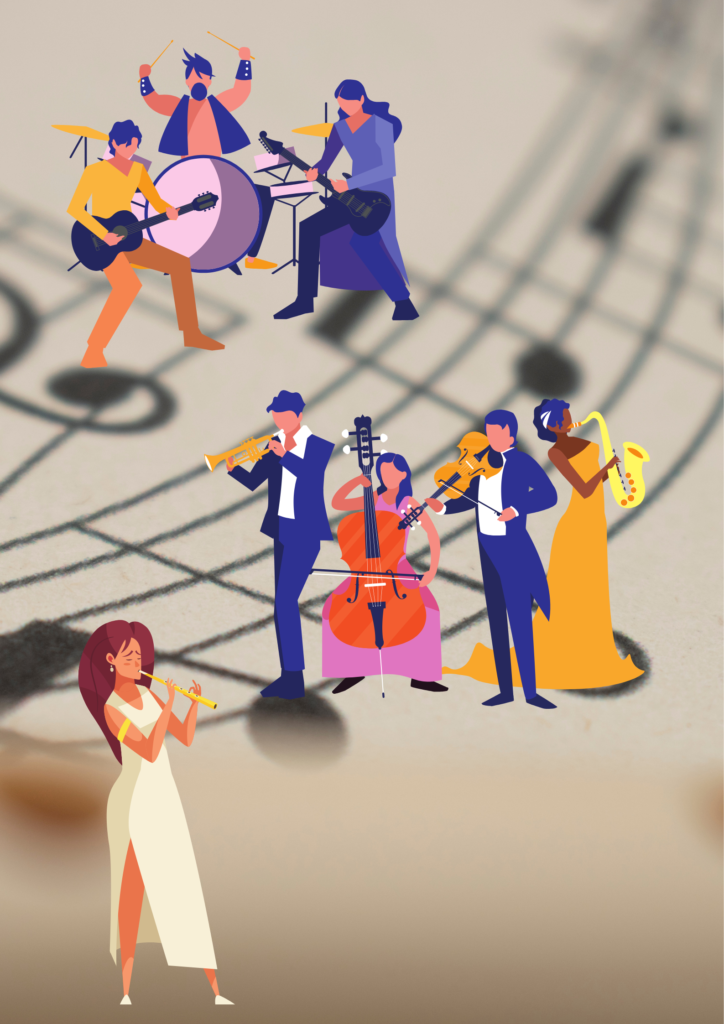From Humble Beginnings to Global Soundscapes: A Journey Through the Ever-Evolving Music Industry

The music industry, a vibrant tapestry woven from the threads of creation, distribution, and consumption, has embarked on a remarkable odyssey throughout history. Its story, intricately linked to technological advancements and cultural shifts, can be separated into three distinct eras: the Pre-Recording Era, the Age of Mechanical Reproduction, and the Digital Age.
The Pre-Recording Era: A World Resonant with Live Performances
Before the dawn of recording technology, music thrived as a primarily live experience. Traveling minstrels, court entertainers, and local folk traditions formed the backbone of the musical landscape. Sheet music, meticulously copied by hand, offered a method for sharing compositions, although accessibility remained limited. However, the world wasn’t entirely devoid of global influences. Trade routes and cultural exchanges fostered a cross-pollination of musical styles, silently laying the groundwork for the trends that would emerge in the centuries to come.
The Age of Mechanical Reproduction: From Tin Cans to Top 40: Democratization Through Recordings
The late 19th and early 20th centuries witnessed a seismic shift with the birth of recorded music. The invention of the phonograph, followed by the gramophone and the iconic vinyl record, transformed music into a portable and readily available commodity. Record labels emerged as powerful entities, managing artist contracts, overseeing production, and directing distribution channels. Radio broadcasting further democratized access to music, propelling national and international stars to unprecedented fame. This era witnessed the rise of genre-specific labels catering to distinct musical tastes, and the development of music charts that not only reflected consumer preferences but also influenced them.
The Digital Age: Disruption, Democratization, and a Universe of Sounds at Your Fingertips
The digital revolution of the late 20th century sent shockwaves rippling through the music industry. The rise of the internet, MP3 players, and file-sharing platforms like Napster fundamentally challenged the traditional record label model. While piracy concerns emerged, a new era of unparalleled accessibility dawned. Consumers gained the power to curate their own personalized music libraries, crafting playlists that reflected their unique tastes and exploring a boundless spectrum of genres. Streaming services, offering vast catalogs of music for subscription fees, became the dominant force, fundamentally altering the way revenue is generated and how artists are compensated.
The digital age has empowered independent artists in unimaginable ways. Online platforms have become launchpads, allowing them to bypass traditional gatekeepers, connect directly with their fan base, and cultivate devoted followings. Social media has become a powerful promotional tool, enabling artists to circumvent traditional media channels and forge a direct connection with their audience.
As we peer into the future, the music industry remains an enigma waiting to be unraveled. Novel technologies like artificial intelligence and blockchain have the potential to revolutionize music creation, distribution, and rights management. However, one constant remains: the enduring human desire to create and share music, a desire that has served as the driving force behind the industry’s remarkable evolution for centuries.




















